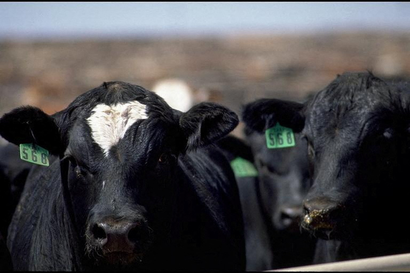
Saleen Martin
Wed, August 17, 2022
Researchers in Argentina have discovered remains of a tiny, herbivorous dinosaur with protective spikes, suggesting the group it belongs to lived in a much wider area than originally thought.
The dinosaur was part of the Cretaceous period, the last era of the dinosaurs, and lived between 97 million and 94 million years ago.
The dinosaur, named Jakapil kaniukura, belongs to a species called the thyreophoran – herbivorous animals, four-footed dinosaurs with bones along their necks to their tails, said Facundo Riguetti, a paleontologist at the Félix de Azara Natural History Foundation-Maimónides University and National Council of Scientific and Technical Research.
The findings were published in this month in the scientific journal Scienti Reports.
"Jakapil is the first basal thyreophoran of its kind found in South America," said Riguetti, one of the paper's authors. "Until recent years, thyreophoran findings were rare in the southern hemisphere."
Earlier thyreophorans, also called basal thyreophorans, mostly lived in North America, Europe, Asia and likely Africa, he said.
What did the dinosaur look like?
The remains found belonged to a subadult Jakapil – not a young individual, but not a fully-grown adult either. The team examined its bones under a microscope and said tissue showed a decrease in the growth rate, which doesn't happen with juveniles, Riguetti said.
The dinosaur weighed about as much as a house cat, or about 8 to 15 pounds, and its teeth were leaf-shaped, similar to those of Scelidosaurus or ankylosaurs, he said.
It's likely that Jakapil walked upright, had a beak and was capable of delivering a pretty strong bite, although not as strong as some other dinosaurs such as ornithopods or ceratopsians, Riguetti said.
Also significant about Jakapil?
This is the first time a basal thyreophoran has a predentary bone, or a beak in the front of the lower jaw. It also has "reduced arms," both in length and in robustness, he said.
He said new search efforts in South America and Africa could lead to similar discoveries.
Saleen Martin is a reporter on USA TODAY's NOW team. She is from Norfolk, Virginia – the 757 – and loves all things horror, witches, Christmas, and food. Follow her on Twitter at @Saleen_Martin or email her at sdmartin@usatoday.com.
This article originally appeared on USA TODAY: Thyreophoran dinosaur Jakapil kaniukura found in Argentina

Video: Fossils of bus-sized 'Dragon of Death' flying reptile unearthed in Argentina



























